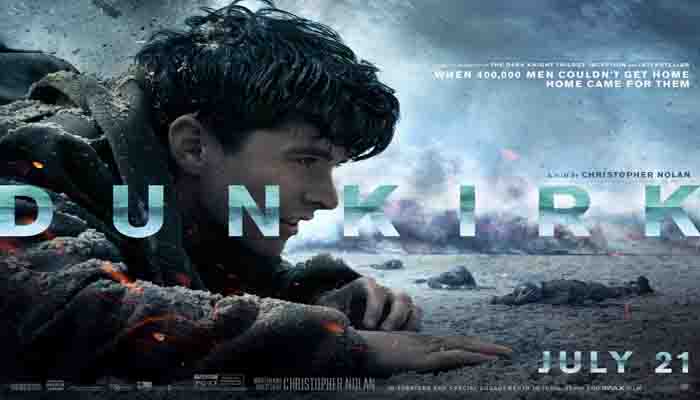
Christopher Nolan has made a harrowing war movie muddled by his signature “Nolan Time,” through Dunkirk that arty temporal scramble that he thinks is more illuminating than it is. Briefly, Nolan Time consists of three parallel temporal lines that appear to be out of sync but prove, in the end, to conform to a Higher Synchronization ie, not the work of God or Fate but of steadfast individuals bravely exercising free will.
Nolan is a god for his movie lovers, and his temple’s walls, dark and foreboding, seem to push in as the lights go down. Your senses, usually dulled by a mundane existence, are heightened. You’ve never experienced anything like it.
Dunkirk, a film about men by men, is a force of nature – an elemental beast of a movie about finding the meaning of life surrounded by the meaninglessness of war.
It is an existential masterpiece set across three parallel plots destined to collide, which in turn are set on three planes of existence earth, air, and water.
These elements symbolise life for common, but in Dunkirk, they might as well be harbingers of death, having suspended our characters in their purgatory as they await judgment.
On the land, in the seaside French town of Dunkirk, 400,000 soldiers have been pushed by ‘the enemy’ curiously, not once are the Nazis mentioned – towards the sea.
They wait, bombarded from behind, and up above, for deliverance. Before they lies a seemingly endless expanse of blue and home, England, is practically within sight, across the choppy waters of the Channel. They go from boat to boat and some even conning their way onto the rickety barges desperate to get off the cursed beach, as torpedoes attack them from below, and missiles rain like hellfire from the sky.
They’re in need of a miracle.
Time is an oft-repeated motif in the film – Nolan, a master working at the peak of his powers, puts the pieces of this jigsaw together with some of his most effortless editings since Inception. Like Inception, as layer after layer of Dunkirk’s nesting doll structure is uncovered, and when the three stories finally converge after almost two hours of merciless tension, the emotional release is pure ecstasy.
Dunkirk spends long stretches in silence. DP Hoyte van Hoytema’s IMAX camera, taking a break from soaring across the skies, wrestling for space among thousands of men, and gazing placidly at the sheer beauty of it all, brings the actors’ faces inches from its own.
Hans Zimmer’s terrific score becomes crucial, and slowly, emerges as a character in its own right in the film. Like the film, it is unrelentingly intense, stretched to breaking point as it conjures tension seemingly from nothing.
There isn’t a single character in this film that is properly fleshed out, and it fails miserably at the Bechdel Test. But never have these glaring missteps mattered less.
“A hero can be anyone.” And this is the sentiment that Nolan has carried into Dunkirk.
A hero can be anyone, from a middle-aged sailor who just wants to teach his son to do the right thing, to a decorated commander who refuses to leave until every last man who serves under him – or even if he doesn’t – has been saved.
Dunkirk is one of the greatest war movies ever made – it’s certainly the tightest, most unwaveringly propulsive film of Christopher Nolan’s career

Post Your Comments